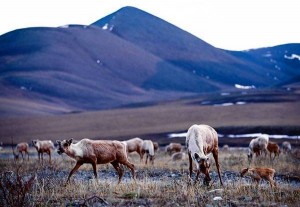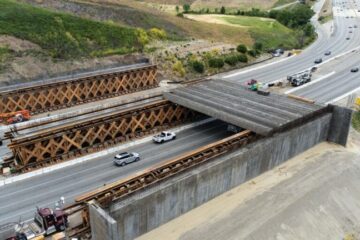CBO drilling revenue projection differs with industry estimates
A Congressional Budget Office report finds that opening the Arctic National Wildlife Refuge and other federal land would bring modest federal revenues, despite more optimistic projections by the oil and gas industry.
Source of this article: The Los Angeles Times, August 10, 2012
WASHINGTON — Opening nearly all federal land to oil and gas drilling — including the Arctic National Wildlife Refuge — would bring modest revenues to the U.S. budget over the next decade, according to a new report by the nonpartisan Congressional Budget Office prepared at the behest of Republican lawmakers.
If opened to drilling, the refuge and parts of the Atlantic, Pacific and Florida coasts together would yield $7 billion over the next decade, the CBO said. That’s less than 5% of the $150 billion the federal budget already stands to get over that period from oil and gas leases on federal land already open to drilling.

A Congressional Budget Office report finds that if the Arctic National Wildlife Refuge and other federal lands were open to oil and gas drilling, the revenues to the U.S. budget would be modest.
The CBO report differs with long-standing assertions by the oil and gas industry and their political allies that opening land currently off-limits to development would channel considerable revenue to federal coffers and help reduce the national debt. Industry and its allies also say that removing drilling limits would free the United States from dependence on foreign oil.
House Budget Committee Chairman Paul D. Ryan (R-Wis.), who requested the report, did not immediately respond to a request for comment. Neither did Rep. Chris Van Hollen of Maryland, the panel’s ranking Democrat.
For its calculations, the CBO cited estimates of 8 billion barrels of oil within the Arctic Refuge. However, the Energy Information Administration — the research and analysis arm of the Energy Department — says the amount is more likely 1.9 billion to 4 billion barrels.
Using the higher estimate, the CBO found that opening the ecologically sensitive wildlife refuge to oil and gas production would yield $5 billion over the next 10 years — 50% to 90% of which would go to Alaska under current law.
Opening more of the American coastline to oil and gas development would yield an additional $2 billion over 10 years, to be divided between federal and state authorities, the CBO said.
“The federal government also would collect royalties if oil and natural gas eventually were produced from those lands, but most royalty payments would not be collected until much later because of the long lag between the initial leasing agreement and the time when production begins,” the CBO said. It estimated those revenues at perhaps $2 billion to $4 billion a year from 2023 to 2035, but called the numbers “quite uncertain.”


